Car accidents, for the most part, ARE avoidable. However, without fully understanding why car accidents occur, it can be difficult for individuals to know what they can do to prevent them. Some causes are more obvious than others, such as drinking and driving, while others are not so well known.
For instance, though many people know it’s illegal to text while driving (in many states). And just taking your eyes off the road for a second greatly increases the chance of a car accident. Many people simply do not understand the very real dangers of distracted driving.
Hopefully, this post will clarify why certain rules and regulations exist, and how your compliance can help prevent dangerous or even fatal accidents.
[Note: If you or someone you love was seriously injured in a car crash in Northern California, contact our attorneys today for a free case review.
What is the number one most common cause of car accidents in the United States?
10 causes of road accidents include distracted driving, speeding, drunk driving, reckless behavior, poor weather conditions, tailgating, running red lights, inexperienced drivers, road rage, and mechanical failures. Understanding these factors can help prevent car accidents and promote safer roads. According to our research, Distracted driving is the number one cause of car accidents.
Distracted drivers divert their attention from the road by engaging in activities such as using a cell phone, texting, eating, or multitasking while driving. Now you may be wondering what are some causes of car crashes? Check out the other top 25 causes below.
Here Are The Top 25 Causes of Car Crashes
1. Distracted Driving

At the top of the list, distracted driving is the number one cause of car accidents in the U.S. each year, and though it is a recognized issue, it is becoming increasingly worse. Distracted driving can lead to serious car accidents, often resulting in severe injuries or fatalities.
Distracted driving includes, but is not limited to, texting while driving, operating another handheld device while driving, driving with the music blaring, talking to backseat passengers while driving, eating while driving and more.
Be smart when behind the wheel, and keep all senses attuned to the task at hand.
It’s one of the reasons why our firm focuses on helping victims injured in car crashes
2. Speeding
“Everyone speeds” is not a good enough reason to put the pedal to the metal. There are speed limits for a reason. Speed limits are designed to give you enough time to break for obstacles and other vehicles.
If you are doing 50 in a 35, you may not be able to stop for a red light in time, or you may brake too late when a kid runs out into the road chasing after his or her ball. Follow the speed limit no matter how ridiculous you think it is.
Speeding is a common cause of car accidents. When drivers exceed the speed limit, they have less time to react to changes on the road, which can lead to accidents. The three most important things to know about speeding are:
Speeding is a leading cause of fatal accidents.
Speed limits are in place for a reason, and drivers should always obey them.
Driving at a safe and reasonable speed can help to prevent accidents.
Speeding is also a common cause of bicycle crashes in California
3. Drunk Driving
Drunk driving used to be the number one cause of accidents, but thanks to cell phones, GPS devices, and tablets, and thanks to drunk driving campaigns, it has moved on down the list.
That said, an unacceptable amount of accidents are caused by drunk drivers each year. Do not be the cause of another tragedy and stay sober. If you do drink while out, have someone DD you, or call an Uber.
4. Reckless Driving
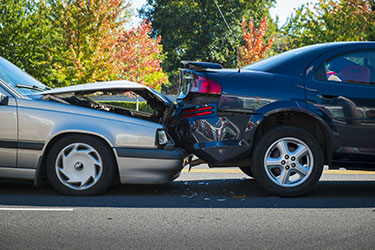
Reckless drivers, who engage in aggressive driving, speeding, swerving in and out of traffic, tailgating, and other aggressive behaviors, contribute to the high number of accidents each year.
Be courteous to others on the road—after all, other drivers have places to be too!—and drive like a polite, civilized human being.
Reckless driving is a traffic offense and can result in fines, points on your license, and even jail time.
Drivers who engage in reckless driving behaviors are more likely to be involved in accidents.
It is important to always drive defensively and be aware of other drivers on the road.
5. Running Red Lights
Like drunk driving, this is one of the more obvious causes of car accidents. Red means stop and will never mean anything else. If your light is red, it means that the lights directing traffic in other directions are likely green or yellow.
If you blow through a red light, chances are you will hit someone whose actual turn it is to go. Being distracted by work matters or family matters is not an excuse. If you are too distracted to drive, do not get behind the wheel.
6. Driving in the Rain
While you cannot always avoid driving in the rain, you can practice safe driving in the rain. Drive slow and if visibility becomes impaired, pull to the side of the road until the worst of the storm passes.
Your boss or significant other or mother will understand if you were late because of bad weather.
The three most important things to know about driving in bad weather are:
Drivers should reduce their speed and increase their following distance in bad weather.
It is important to ensure that your vehicle is equipped with appropriate tires and other equipment for the weather conditions.
Drivers should be aware of changing weather conditions and adjust their driving accordingly.
7. Tailgating
There is never an excuse for driving too close to another vehicle. Tailgating is a dangerous behavior that has led to many fatal car accidents. Ultimately, you should keep two to three car lengths between you and the vehicle in front of you —that distance allows you ample time to stop should the car before you suddenly stop. Keep a safe distance between you and the car ahead of you at all times.
8. Drowsy Driving
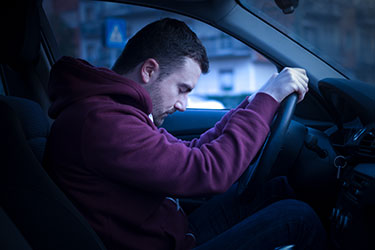
Research indicates that driving while tired is just as dangerous as driving while drunk. Being overtired can impair your judgment, slow your reaction time, mess with your vision, and even cause you to fall asleep behind the wheel.
If you catch yourself drifting off or are having difficulty concentrating, pull off to the side of the road and rest. If you are near home or a hotel, stop and get some sleep before hitting the road again.
9. Drugs
Alcohol and drowsy driving are not the only things that can impair your vision or judgment. Both illegal and legal drugs can inhibit your senses and make it difficult for you to drive safely.
Do not do narcotics or take heavy prescription medications before getting behind the wheel. If your doctor does prescribe you a medication, ask him or her if use of the medication will impair your judgement in any way.
10. Fog
Like with rain, you cannot always avoid driving in the fog. If you are forced to drive in the fog, use your fog lights, drive at or below the speed limit, and constantly check to make sure that you are in your own lane.
11. Snow
If there is a great deal of snow on the ground, avoid getting behind the wheel entirely. Driving in the snow is almost always avoidable. In fact, many employers make allowances for heavy snows and let workers either work from home or take the day off. If, however, you are forced to drive in the snow, put your vehicle into four-wheel drive and drive slowly. If you do not have a four-wheel drive vehicle, put chains on your tires. If you do live in an area prone to snow, make sure to equip your vehicle with snow tires.
12. Unsafe Lane Changes
Changing lanes is not unsafe. Changing lanes without looking, when there is little space between the cars in front of and behind you, or at fast speeds, however, is. When changing lanes, always check your mirrors and look over your shoulders, and only change lanes when there is adequate space to do so.
13. Teenagers
Though teenagers have a lot of redeeming qualities, carefulness is not one of them. Not only are teenagers inexperienced behind the wheel, but also, they tend to exhibit reckless behaviors, especially behind the wheel. Their inexperience combined with naturally reckless tendencies often result in accidents, and unfortunately, more work for car accident attorneys
14. Night Driving
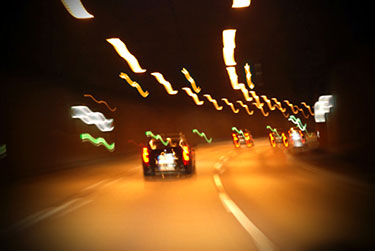
Forty-nine percent of fatal car accidents happen at night, and the fatality rate per mile is nearly three times as high at night as during daylight hours. Night driving is dangerous.
Not only is vision impaired at night, but many people behind the wheel at night are tired, intoxicated, or both.
While you will be required to drive at night sometimes, remain vigilant behind the wheel, stay sober, and if you find yourself getting tired, either have someone else drive or pull over and rest.
15. Animal Crossings
When a large animal jumps into the middle of the road, it can cause a lot of damage, to both the car that hits it and any cars behind the lead vehicle. While there is no way to anticipate animals crossing the road, you can keep an eye out.
When driving at night, use your high beams to look for glowing eyes, and when you see animal crossing signs, become even more vigilant.
16. Construction Sites
Construction zones can be confusing, and oftentimes, there is not adequate enough warning for them. That said, if you see orange, be on the lookout. Always follow the posted speeds even when you do not see any workers present, and be extra vigilant about those around you. If you are confused, chances are other drivers are as well.
17. Improper Turns
As a licensed driver in the U.S., you should know how to make a legal and safe turn. Improper turns are a common cause of motor vehicle accidents. Steps for performing a legal turn include using your blinker, slowing down, and obeying all traffic signs and signals. Do not perform an illegal turn when signs clearly indicate turns in a certain direction are forbidden. If you need to get somewhere, take the correct way to that place, as shortcuts cause accidents.
18. Wrong Way Driving
Wrong way driving is worse than improper turns. Unfortunately, wrong-way driving accidents are more common than most people might think, and many of those crashes happen on freeways, where cars are driving along at speeds of between 60 and 80 miles per hour. A head-on collision at those speeds can be fatal. If you are unfamiliar with an area, pay close attention to all signs and to the direction in which traffic is flowing
19. Vehicle Malfunctions
It is not unheard of for cars to stall in the middle of a freeway, or for gears to shift while a car is in drive. Cars that stall out of nowhere are both dangerous to the occupants and occupants of other vehicles. You can prevent a crash by maintaining your vehicle and fixing issues when they arise, and not just when they become inconvenient.
20. Potholes
Potholes are a pain, and unfortunately, they cannot always be avoided. However, if you see a pothole ahead of you, either try to avoid it or slow down when you go through it. Speeding through a pothole is a guaranteed way to lose control and/or blow a tire.
21. Tire Blowouts
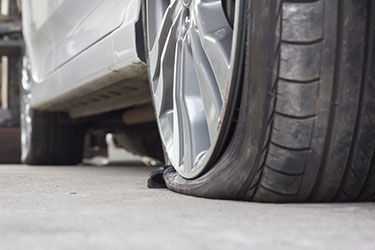
Speaking of blown tires, these are just as dangerous as potholes or vehicle malfunctions, as they can cause you to lose control of your vehicle.
You can prevent tire blowouts by having your tires rotated regularly, changing them when they start to wear, and inspecting them for imperfections every so often.
22. Curves
Tight and blind curves are hazards to drivers. Though curves can be fun to drive around—especially for those familiar with an area—they are the cause of several accidents. When driving on curvy roads, make sure to maintain the speed limit and look out for others.
23. Failing to Obey the Rules of the Road
Again, rules are in place for a reason, and it is not to make your life difficult. Rules are there to protect us. Speeding, running red lights, ignore traffic signs, following too closely, and other illegal driving behaviors cause accidents.
You can help reduce the number of accidents by following the rules of the road and hoping that others are wise enough to do the same.
24. Street Racing
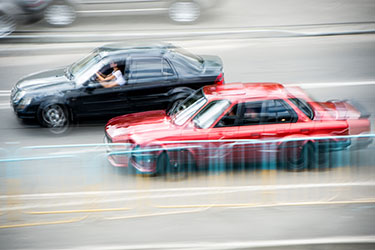
Though street racing is illegal, people still do it. Street racing on public roads with other drivers is downright dangerous, and if one is caught partaking in street racing activities, he or she could be charged with a lot more than reckless driving.
If you have the need for speed, find a street racing league and race only on private roads.
25. Ice
Ice is difficult to avoid, especially black ice. However, if it is cold enough out to ice, be extra cautious. Slow down before bridges, drive the speed limit, and leave plenty of room between your car and the vehicle in front of you.
When approaching a stop sign or stoplight, start stopping far in advance to allow room for skidding.
Most car accidents are caused by human error and negligence, as this list indicates. If everyone did their part and obeyed the rules of the road and practiced safe driving in dangerous conditions, the accident statistics would be a lot less dismal.
Though it is unrealistic to think that we can reduce accident numbers to zero, even one less accident is a step in the right direction.
Tips to avoid car accidents
Avoid distractions while driving, such as using electronic devices or eating while behind the wheel.
Obey speed limits and traffic signals, and avoid aggressive driving behaviors.
Never drink or drive under the influence of drugs.
Adjust your driving habits to account for poor weather and road conditions.
Keep your vehicle in good condition, and have it regularly serviced and maintained.
Be aware of other drivers on the road, particularly inexperienced or elderly drivers.
Pay attention to pedestrians and cyclists, and give them plenty of room to maneuver.
FAQs
Q. What are the most common causes of car accidents?
A. Distracted driving, speeding and reckless driving, impaired driving, poor weather and road conditions, vehicle malfunctions, inexperienced and elderly drivers.
Q: What is the most common cause of car accident deaths?
In the United States, the most common cause of car crash deaths is driving under the influence of drugs or alcohol. Other common causes include distracted driving, such as using a cellphone while driving, speeding, reckless driving, and not wearing a seatbelt. It’s important to always follow traffic laws and practice safe driving habits to help prevent car crashes and fatalities.
Were you in a car accident? Reach Out to a Skilled Car Accident Attorney for Help
If you were involved and injured in a car accident in California, contact GJEL to learn more about your compensation recovery options today.
We are eager to assist you throughout each step of your case.
Car Accident Statistics
The U.S. sees approximately six million car accidents each year. That breaks down to approximately 15,000 accidents each day.
There are about 37,000 crash fatalities each year, or 101 deaths per day.
An additional 2.35 million suffer injuries or disabilities annually or 6,438 per day.
Though the numbers are better than what they used to be (which is in large part thanks to the safe driving campaigns and stricter laws), they are by no means “ideal.” Accident rates should not be in the millions, death rates should not be in the ten thousand, and injuries should not be in the millions.
If you or someone you love was injured in an accident contact our California wrongful death attorneys today for a free case review.
